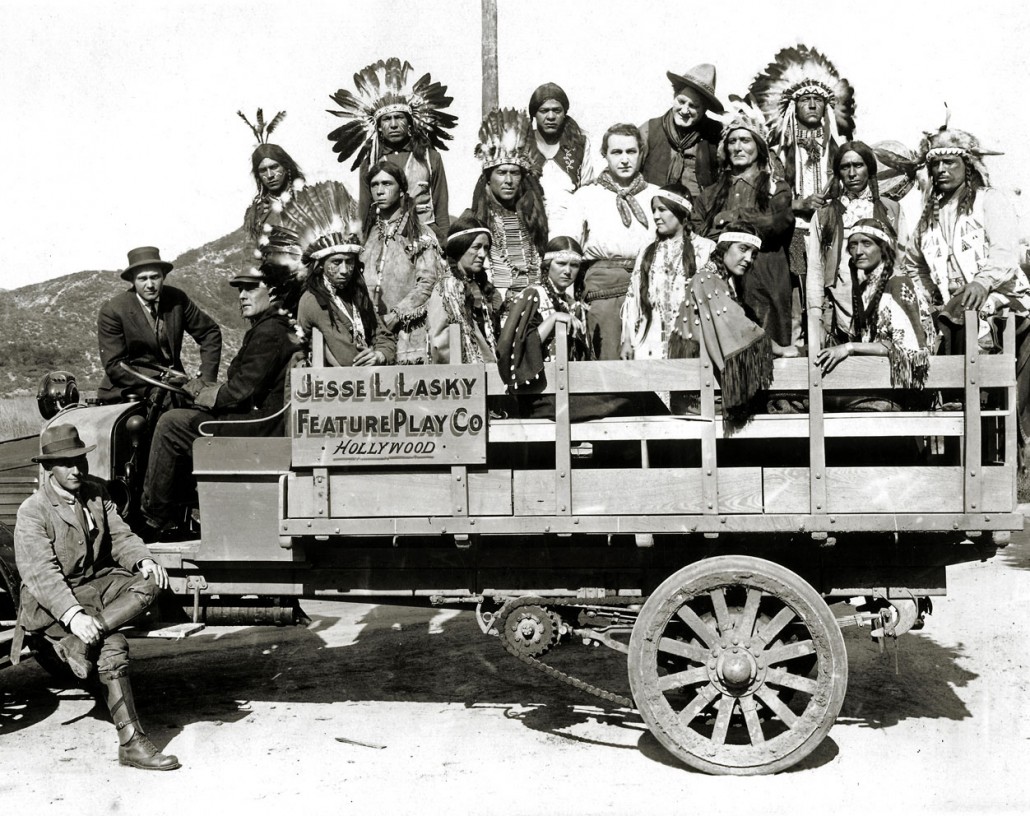Cecil B. DeMille : Cecil Blount DeMille was a founder of the Hollywood motion-picture industry. His first film, The Squaw Man, ...in the silent era
08/05/2018
Filmography :-
1. Silent Features :-
DeMille personified the silent era of American film. In 1913, when he left a thirteen-year career on the stage and stepped behind a motion-picture camera, the medium was still being formed. He immediately sensed that anything was possible. Applying theatrical methods to the new medium, and inventing new ones as needed, he adapted and thrived, molding a new art form. He did not invent the closeup, for example, but he found many ways to improve it.
One of DeMille’s most important contributions was to organize the hierarchy of filmmakers. In 1914 he created the post of story editor for his brother William de Mille. Shortly thereafter he hired a writer-director named Jeanie Macpherson and taught her what he had learned about story construction from his father, his brother, and David Belasco.
DeMille also created the post of art director, hiring Belasco’s lighting and scenic designer, Wilfred Buckland. This affected the work of cameraman Alvin Wyckoff, who only used flat, diffused light. DeMille forced Wyckoff to imitate moonlight with a spotlight borrowed from the Mason Opera House in downtown Los Angeles, and “motivated lighting” was born.
DeMille became a modern Medici, hiring artists from all over the world, and giving them freedom to do their work.
There was no model for the movie director in 1914. DeMille wore boots because of weak ankles, a condition aggravated by sixteen-hour work days. He carried a gun because the countryside was rife with rattlesnakes. He wore a visored cap backwards because that made it easier to look through the camera. He substituted a microphone for a megaphone because it reached farther. Nothing was for show. Everything served his ultimate purpose, which was to tell his stories. DeMille soon saw that his image was bringing audiences to his films.
1. The Squaw Man :
Credits
Studio: Jesse L. Lasky Feature Play Company
Released: February 23, 1914
Featured Cast: Dustin Farnum, Winifred Kingston, Red Wing, Monroe Salisbury
Producer: Jesse L. Lasky
Directors: Oscar Apfel, Cecil B. DeMille
Screenwriters: Oscar Apfel, Cecil B. DeMille
Source: The Edwin Milton Royle play The Squaw Man
Cinematographer: Alfred Gandolfi
Editor: Mamie Wagner
Theme
After taking the blame for his cousin’s embezzlement, a British nobleman becomes a rancher in America.
Interactive
Mr. DeMille Remembers His First Day in Hollywood
Reviews
“Tuesday several hundred persons saw the first production of the Jesse L. Lasky Feature Play Company, a six-part version of The Squaw Man at the Longacre Theatre. Everybody was much pleased with the picture. As the first production of a new company, it augurs well. Dustin Farnum is a regular screen leading-man now, all right. But the point is that the vehicle is there. The Squaw Man will be liked.”
– George D. Proctor, “Oh, It’s an Interesting Life,” The Motion Picture News, Vol. IX, No. 1 (February 28, 1914)
“One of the best of all the reproductions in pictures of successful dramas is the Jesse L. Lasky Feature Play Company’s filming of Edwin Milton Royle’s The Squaw Man in six reels and 264 scenes. It was shown for the private-invitation performance at the Longacre Tuesday morning before an audience that looked like a ‘first night’ of some legitimate show. Special music was rendered by a full orchestra. It was unfortunate that the exhibition was not made in a regularly equipped picture house. A makeshift projection machine with sprocket holes constantly obtruding themselves, reinforced by a cracked condenser, did not contribute to otherwise good effect. Nor did the sheet, a piece of muslin. In spite of these handicaps, this feature film may be set down as a genuine ‘masterpiece’ in moving-picture production.”
– Variety
Artist Comment
“We were charting a new course in American motion picture production. The future lay in ‘feature plays,’ pictures several reels long, telling a well-constructed story, well acted, and intended as ‘feature’ attractions which could stand on their own merits as a real and new form of the drama.”
– Cecil B. DeMille, Autobiography
Figures
The Squaw Man cost $15,450.25 and grossed $244,700.00.
(These figures have not been adjusted for inflation nor do they include the considerable profits realized from reissues, television syndication, and home entertainment formats.)
To be continued ...





.jpg)
.jpg)
Comments
Post a Comment